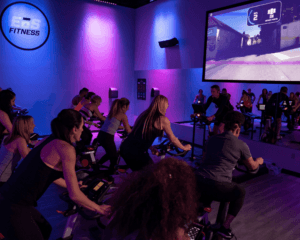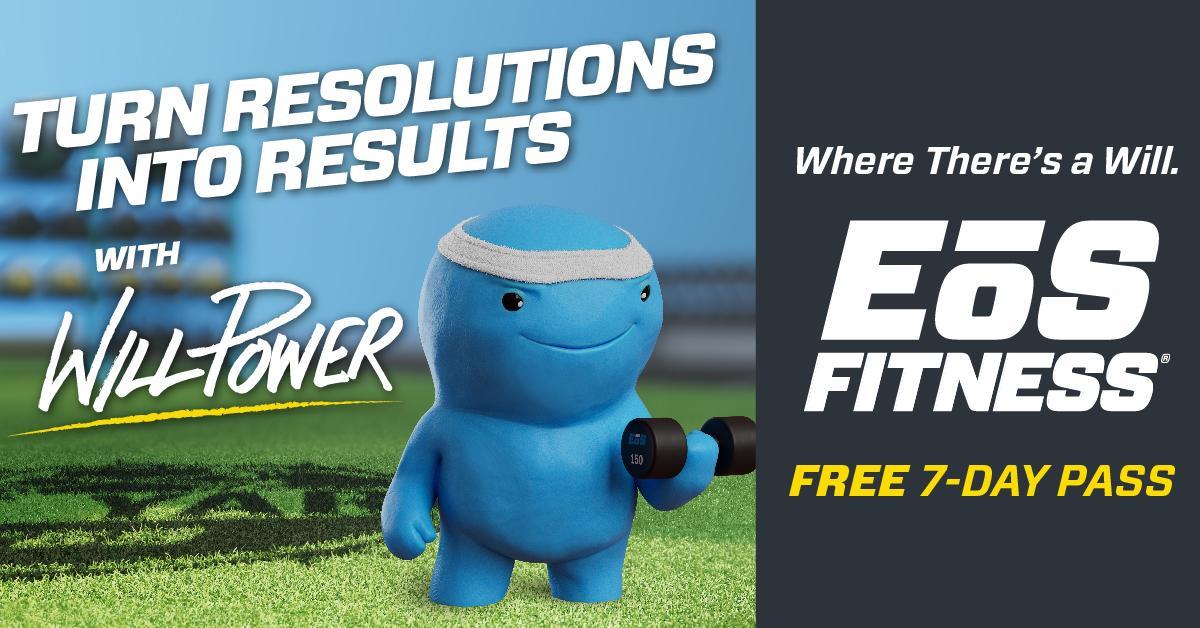A GUIDE TO ZONE 2 CARDIO – WHAT, WHY & HOW TO START
Fitness Tips
Aug 27, 2024 • 10min read
Ever wonder if there’s a sweet spot in your workouts where you can torch fat, build endurance and enhance your heart health all at once? Let us introduce you to zone 2 cardio!
This form of aerobic exercise isn’t just for elite athletes; it’s a game-changer for anyone looking to optimize their fitness routine. By targeting a specific heart rate range, zone 2 cardio maximizes fat burning and boosts cardiovascular health, making it essential for your workout arsenal.
Let’s dive into what makes zone 2 so effective and how you can start reaping its benefits today.
What You Will Learn:
Estimated reading time: 9 minutes
Understanding Heart Rate Zones
Before you start zone 2 training, it’s essential to understand the different heart rate zones and how each impacts your body. Heart rate zones indicate the intensity of your exercise based on your heart rate. They are divided into five levels, each corresponding to varying exercise intensity and physiological response relative to your maximum heart rate (MHR).
Zone 1: 50-60% of MHR – Very Light Intensity
- Activities: Light walking, gentle stretching.
- Benefits: Enhances overall health, aids in recovery and promotes relaxation.
Zone 2: 60-70% of MHR – Light Intensity
- Activities: Brisk walking, light jogging, steady cycling.
- Benefits: Improves endurance, enhances fat oxidation and builds a solid aerobic base.
Zone 3: 70-80% of MHR – Moderate Intensity
- Activities: Running, swimming, intense cycling.
- Benefits: Increases aerobic capacity and improves cardiovascular fitness.
Zone 4: 80-90% of MHR – Hard Intensity
- Activities: Sprinting, high-intensity interval training (HIIT), intense cardio classes.
- Benefits: Enhances anaerobic capacity, increases lactate threshold (the point where lactic acid builds up faster than the body can clear it) and boosts overall speed and power.
- Activities: All-out sprints, intense HIIT.
- Benefits: Improves maximum performance capacity, speed and explosive power.
What is Zone 2 Cardio?
Zone 2 cardio is a moderate-intensity workout that enhances endurance, burns fat and improves cardiovascular health. Zone 2 is commonly called the “conversational” pace because you should be able to talk comfortably while exercising in this heart rate zone.
Here’s how to find your zone 2 heart rate in the 60-70% of your maximum heart rate (MHR):
First, use this calculation to find your MHR:
220 – Your Age = MHR
Then, find 60-70% of your MHR using the following calculation. This range will be your target zone 2 MHR:
Zone 2 Lower Limit = MHR × 0.60
By understanding zone 2 cardio, how to calculate your zone 2 heart rate and using the right tools to monitor your progress, you’ll be well on your way to reaping the benefits of this effective training method.
What are the Benefits of Zone 2 Cardio Training?
At this point, you might be wondering about the benefits of performing moderate-intensity training. We’ve got a surprise…there are a lot! Whether you’re walking, jogging, cycling or swimming, you may be surprised at the benefits zone 2 training can offer:
- Burn Fat More Effectively: Zone 2 training is often referred to as the “fat-burning zone” because it is excellent at burning fat. At this moderate intensity, your body uses fat for energy because it has enough oxygen to break down fats effectively. Prolonged exercise in this zone increases your ability to burn fat, even at rest.
- Enhance Your Cardiovascular Fitness: Consistent zone 2 cardio strengthens your heart muscle, making it more efficient at pumping blood through your body. With consistent training in this zone, you can lower your resting heart rate and increase your heart’s stroke volume (the amount of blood pumped per beat). The reduced daily strain on your heart can lower your risk of heart disease and hypertension.
- Build Your Endurance: Alongside increasing your cardiovascular system’s efficiency, working out in this zone can help you build your athletic endurance. Zone 2 training boosts mitochondrial density—the number of mitochondria in your cells—helping your muscles use oxygen more effectively. As a result, you’ll increase both your stamina and endurance.
- Accelerate Recovery Time: The enhanced circulation from zone 2 training helps deliver oxygen and nutrients more effectively to your muscles and organs. The improvements to your circulation promote better blood flow and the removal of metabolic waste, working together to reduce muscle soreness and improve recovery times.
- Long-Term Sustainability: The best part of zone 2 workouts is their sustainability. Since they’re performed at a moderate intensity, they’re less likely to cause overtraining and injury than high-intensity workouts. This makes them a sustainable long-term exercise strategy for fitness enthusiasts of all levels.
Zone 2 Cardio Exercises
Incorporating various activities can help you stay engaged and maintain your zone 2 heart rate. Here are some great zone 2 options to consider:
- Brisk Walking: Walk at a pace that allows you to converse comfortably. Increase speed or add slight inclines to maintain your zone 2 heart rate.
- Jogging: Run at a steady, moderate pace. Keep it light and sustainable, focusing on maintaining your heart rate within zone 2.
- Cycling: Ride your bike at a consistent speed on flat terrain. Adjust the resistance on a stationary bike or choose routes with gentle inclines to stay in zone 2.
- Swimming: Perform continuous, steady laps while swimming in the pool. Maintain a pace that keeps your heart rate in the zone 2 range without causing excessive fatigue.
- Rowing: Use a rowing machine at a moderate, steady intensity. Adjust the resistance and focus on smooth, continuous strokes.
- Elliptical Machine: Set the resistance and incline to moderate levels, ensuring a steady, rhythmic pace that keeps you in zone 2.
How to Incorporate Zone 2 Cardio into Your Routine

When selecting your zone 2 workouts, consider low-impact activities, especially if you are new to exercise or managing joint issues. Low-impact activities such as swimming, cycling and using an elliptical machine are excellent choices as they minimize joint stress while providing an effective cardiovascular workout. Check out these workouts for structuring your moderate-intensity activities for beginners and fitness enthusiasts:
For Beginners
- Frequency: Start with 2-3 sessions per week.
- Duration: Aim for 20-30 minutes per session.
- Progression: Gradually increase the duration by 5-10 minutes each week as your fitness improves.
For Fitness Enthusiasts
- Frequency: Incorporate 3-4 sessions per week.
- Duration: 45-60 minutes per session.
- Integration: Combine zone 2 workouts with higher-intensity sessions and strength training for a well-rounded routine.
No matter your experience, a balanced fitness routine should include zone 2 cardio, high-intensity interval training (HIIT), strength training and flexibility exercises. Here’s how to integrate these elements:
- Zone 2 Cardio: Schedule these sessions on alternate days to allow recovery and prevent burnout.
- HIIT: Incorporate 1-2 weekly sessions to boost cardiovascular fitness and burn calories.
- Strength Training: Aim for 2-3 weekly sessions, focusing on different muscle groups.
- Flexibility Exercises: Include stretching or yoga sessions 1-2 times per week to aid recovery.
Measuring Zone 2 Impacts on Long-Term Health
While monitoring your heart rate to hit that zone 2 sweet spot, tracking other heart rate measurements can help you understand your overall heart health. For example, your cardio recovery rate or resting heart rate can showcase the improved long-term health impacts of consistent zone 2 training. Explore a few key heart rates to track while doing zone two exercise routines:
Cardio Recovery Rate: Cardio recovery rate is the speed at which your heart rate returns to normal after exercise. The faster your heart rate drops, the better your cardiovascular fitness, highlighting your body’s ability to handle and recover from physical stress. Here’s the calculation to measure your cardio recovery rate:
Peak Heart Rate – Post Workout Heart Rate = Cardio Recovery Rate (in beats per minute)
- Peak Heart Rate: Measure your heart rate immediately after finishing the most intense portion of your zone 2 cardio session.
- Post-Workout Heart Rate: Rest for one minute. Check your rate after one minute has passed.
Resting Heart Rate: Beyond your cardio recovery rate, consistent zone 2 workouts can positively impact your resting heart rate too. To measure this long-term impact on your cardiovascular health, record your resting heart rate first thing in the morning before getting out of bed. A lower resting heart rate typically means your heart is strong and efficient, pumping more blood with each beat. Track this over weeks and months to see improvements.
As you see your fitness improve, it’s essential to adjust your workouts to continue making progress. Here are some tips for elevating your zone 2 workouts:
- Increase Duration: Gradually extend your zone 2 cardio sessions. If you started with 20 minutes, try increasing by 5-10 minutes each week until you reach 45-60 minutes.
- Increase Intensity: As your cardiovascular fitness improves, you may need to adjust the intensity to stay within zone 2. This might mean increasing your pace or adding slight inclines.
- Periodic Reassessments: Reassess your heart rate zones every few months. As you become more fit, your maximum heart rate may change, altering your zone 2 range. Use tools like heart rate monitors and fitness apps to help with these assessments.
Monitoring your recovery and resting heart rates ensures a comprehensive understanding of your cardiovascular health. This holistic approach helps you make necessary adjustments, optimize your workouts and track your progress more effectively.
Practical Tips to Crush Your Zone 2 Cardio Journey
Whether you aim to shed a few pounds, run longer distances or boost your overall health, zone 2 cardio is the game-changer you’ve been looking for. Here are practical tips to help you on your journey:
- Consistency is Key for Results: Consistency is crucial to truly experiencing the benefits of zone 2 cardio. Think of zone 2 cardio as a long-term investment in your fitness; the more you commit, the greater your returns. Remember, every workout is a step forward to a healthier you!
- Always Listen to Your Body: Part of every fitness journey includes recognizing the signs of overtraining. Be aware of signals like persistent fatigue, decreased performance, frequent injuries, mood changes and sleep problems to prevent burnout. At EōS, we believe in working smarter, not harder!
- Set Goals for Trackable Progress: Define specific, measurable fitness goals to stay focused and motivated. Goals can include increased endurance, fat loss or improved cardiovascular health. Fitness apps or journals offer a great way to track your fitness journey. And don’t forget to celebrate your milestones!
- Connect with Others for Extra Motivation: Joining Group Fitness Classes, running clubs or even participating in the fellowship offered by the gym atmosphere can help you stay motivated and accountable. If you’re looking for motivation, we offer great Personal Training packages to help match your fitness program to your needs.
Ready to Get Your Heart Pumping with Zone 2 Cardio?
Zone 2 cardio is your ticket to a fitter, healthier you! It builds a solid aerobic base, enhances metabolism and lowers the risk of heart disease—all while keeping workouts enjoyable and sustainable. At EōS Fitness, we’re thrilled to support you on this journey. Our various classes, state-of-the-art facilities and vibrant community provide everything you need to succeed. Join us today and explore how zone 2 cardio can transform your fitness routine.
Find a gym near you and jumpstart your journey towards better health and fitness. Let’s get your heart pumping and hit those goals together!








